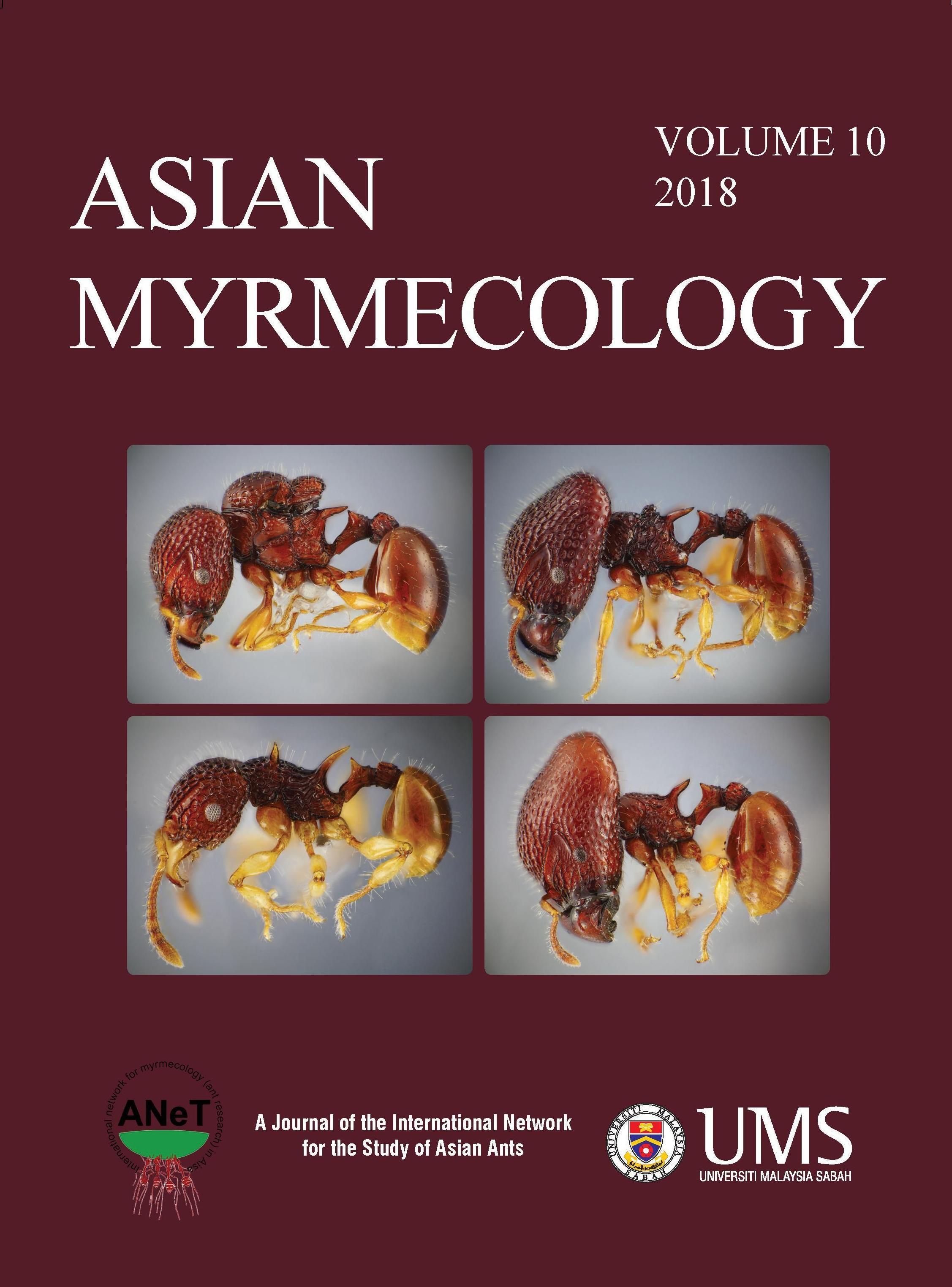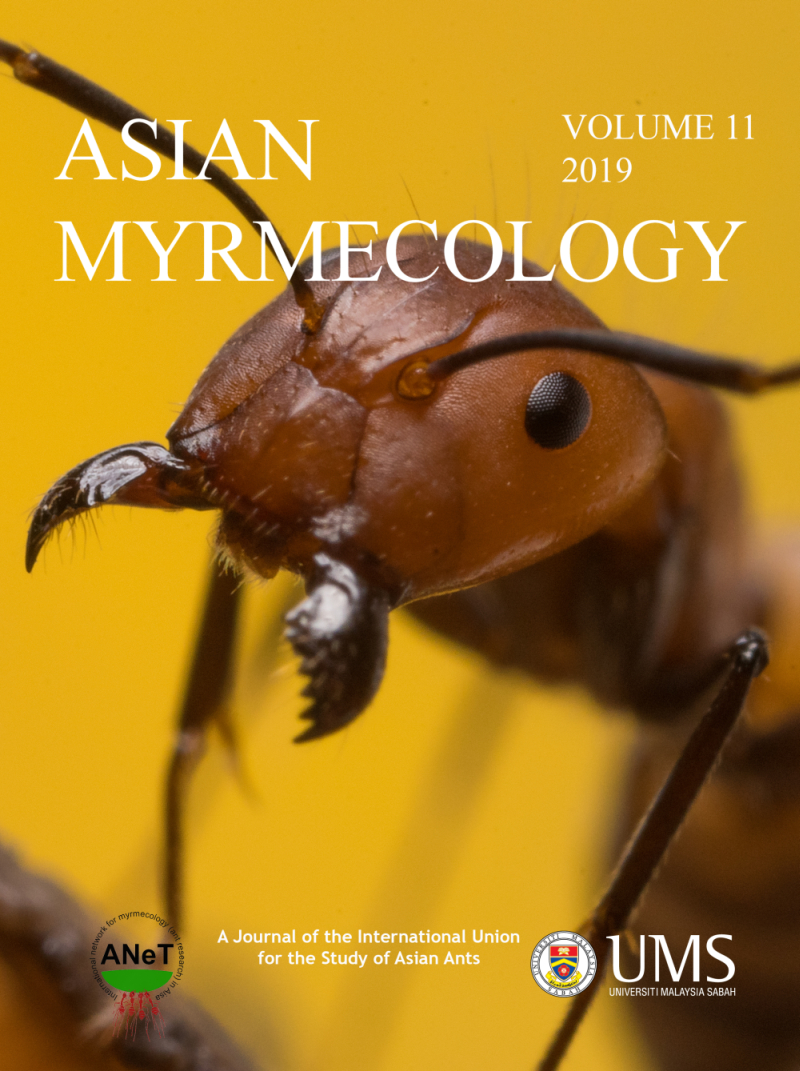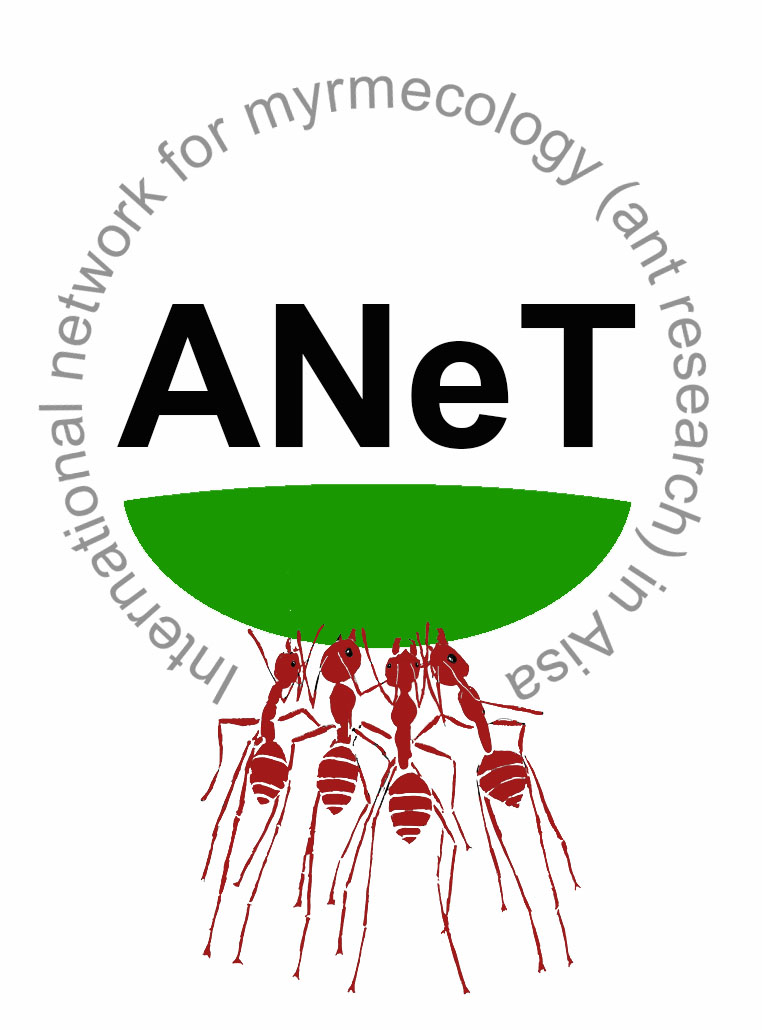ASIAN
MYRMECOLOGY
Image: François Brassard
online first (online version of paper published before print issue)
Life History
DOI: 10.20362/am.010006
Asian Myrmecology 10: e010006 (1-9)
article first published online 27/August/2018
Colony structure and life history of Lioponera daikoku (Formicidae: Dorylinae)
NAOTO IDOGAWA* & SHIGETO DOBATA
Abstract:
We report the colony structure and life history of the basal doryline ant Lioponera daikoku in Kyoto Prefecture, Japan. The following characteristics were observed in the field: (1) nests were always in the cavities of dead bamboo stems on the forest floor; (2) the colonies were small, averaging 10 workers with a single dealate queen; (3) each queen had four ovarioles (2 + 2), while workers had two (1 + 1); (4) alate sexuals with normal wings were produced in August, and participated in nuptial flights the next May; (5) brood production showed no indication of synchronization, and immatures at different stages coexisted in the same nests; and (6) the larvae and pupae of Monomorium ants were stored in the nests. Although many ant species nested in the bamboo stems at the study site, we suspect that L. daikoku is a specialist predator of Monomorium ants. We also describe the male of this species.
Keywords:
Cerapachys, Ooceraea, army ants, raider ants, bamboo-dwelling ants
Get PDF (3.29MB):
Laboratory of Insect Ecology, Graduate School of Agriculture, Kyoto University, Kitashirakawa-oiwakecho, Sakyo-ku, Kyoto 606-8502, Japan
*Corresponding author: idogawa.naoto.na@alumni.tsukuba.ac.jp



